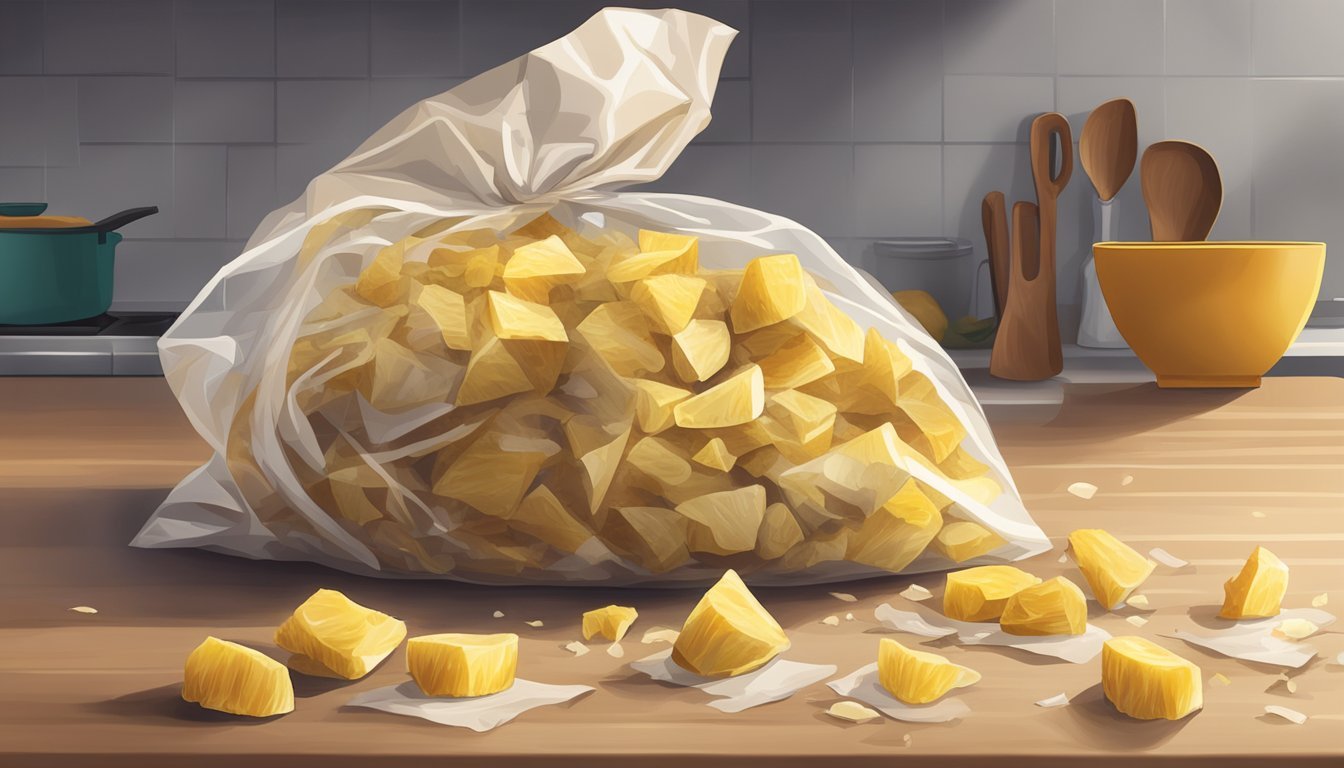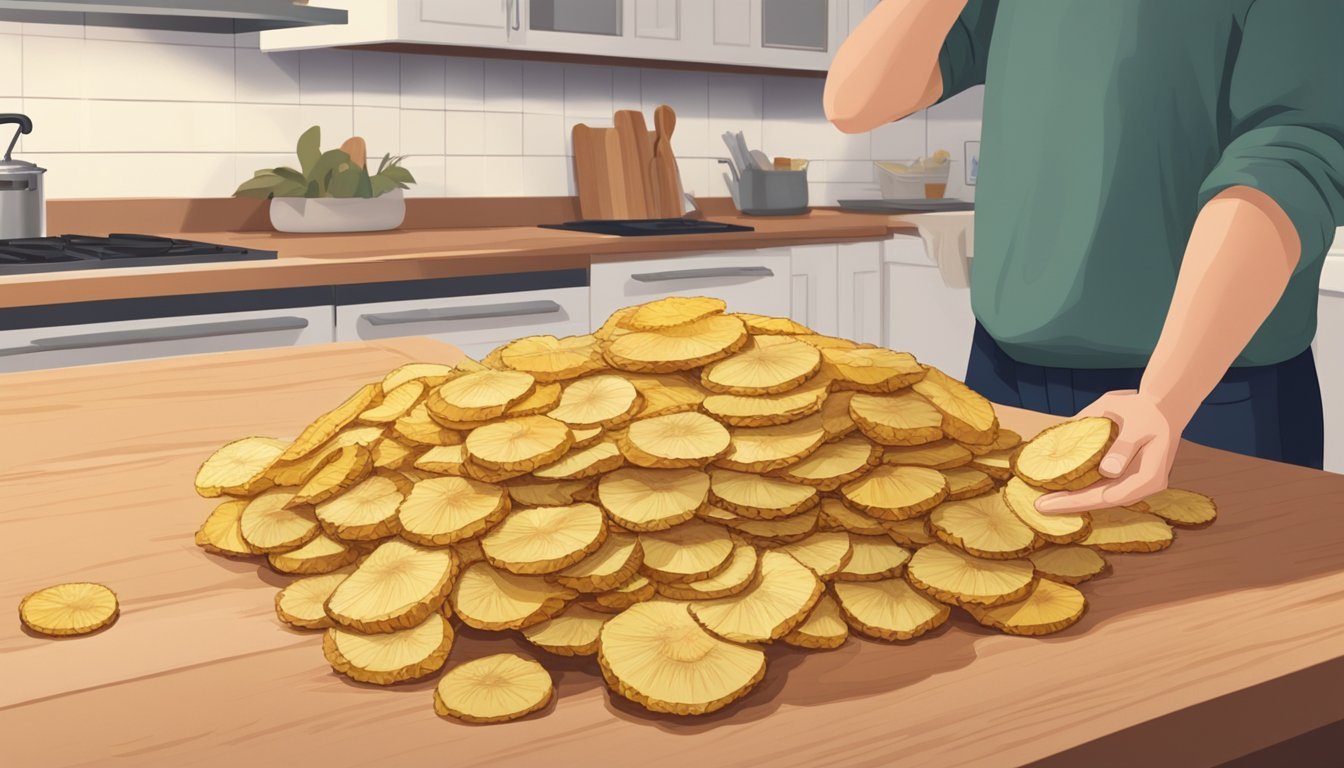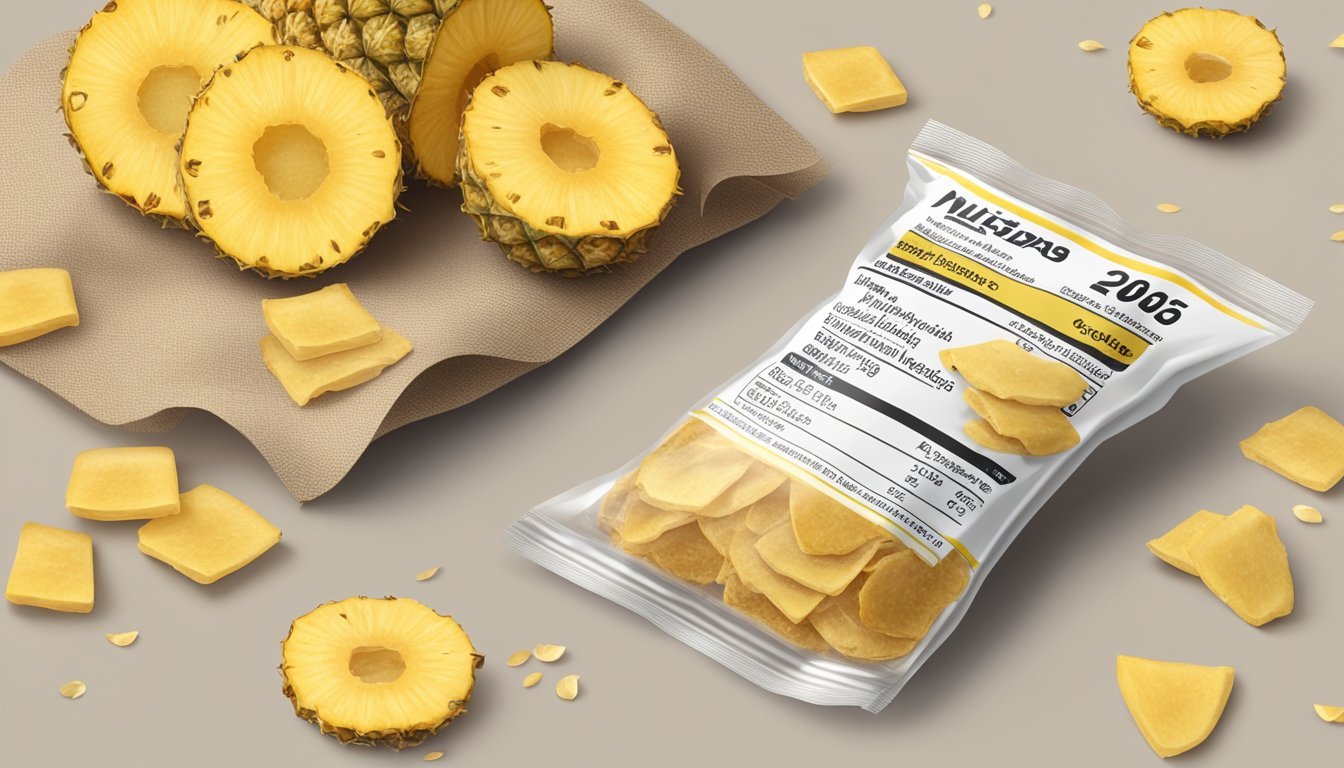Is It Safe to Eat Expired Dried Pineapple?
Unveiling the Truth about Food Expiration Dates
Eating expired food is a concern for many, particularly when it comes to products like dried pineapple that often sit on shelves for extended periods. With its bright color and sweet, tangy taste, dried pineapple is a popular snack that also serves as a convenient way to enjoy the fruit's nutrients year-round. However, consumers frequently question whether it is safe to consume dried pineapple after the expiration date has passed.
The shelf life of dried pineapple is significantly longer than its fresh counterpart due to the removal of moisture, which discourages the growth of microorganisms that cause spoilage. Unopened and stored properly in a cool, dry place, dried pineapple can remain at peak quality for up to a year. Once opened, if sealed and stored in the refrigerator, it may retain its quality for an additional six to twelve months.
It's essential to distinguish between best before dates—which often indicate peak quality—and safety. While the texture, taste, and nutritional value of dried pineapple might diminish over time, consuming it after the best before date is not automatically unsafe. Consumers should inspect the dried pineapple for signs of spoilage such as discoloration, mold, or off odors before eating, regardless of the printed date.
Understanding Food Expiration
When discussing the safety of consuming food items past their marked dates, it is essential to differentiate between terms like shelf life, best before, use by, and expiration date. Although these terms are often used interchangeably, they have distinct meanings.
Shelf Life: This refers to the length of time that food retains its desired quality and safety under appropriate storage conditions. For dried pineapple, the shelf life can extend up to a year if stored in a cool, dry place.
Best Before: A date indicating when a product will likely start to lose its peak quality. However, this is not a safety-related date. Products can still be consumed beyond this date but might not have the same taste or texture.
Use By: This label is about safety and is found on perishable items. Consuming products past this date could be harmful.
Expiration Date: Often similar to the use by date, it's the last day the manufacturer guarantees the full safety and potency of a product.
It's noteworthy that dried fruits, such as pineapple, generally offer a longer shelf life due to the removal of moisture, which inhibits bacterial growth and spoilage. But this doesn't mean they're invulnerable to quality degradation over time. Proper storage is key to extending the life of dried pineapple. Once the packaging is opened, it's advisable to keep the fruit in an airtight container, possibly in the refrigerator, to maintain its quality.
Remember that while consuming dried pineapple past its best before date is not necessarily unsafe, the sensory attributes like flavor and texture may decline. Always inspect the food for signs of spoilage, such as a change in color, taste, or the presence of mold, before consumption.
Assessing the Safety of Dried Pineapple
When determining whether it's safe to eat expired dried pineapple, one should consider several specific factors including signs of spoilage, potential health risks, and nutritional changes. Understanding these elements can guide the consumer in making an informed decision.
Signs of Spoilage
Dried pineapple, like all dried fruits, has a longer shelf life compared to its fresh counterpart due to its low moisture content. Spoilage can be identified through certain indicators including the presence of mold, an off-odor, discoloration, or a change in texture. If any of these are observed, the dried pineapple should not be consumed.
Risks of Consuming Expired Foods
Eating expired dried pineapple may not always lead to foodborne illness, but it can be associated with some risks, particularly if there are signs of spoilage. The risks range from digestive discomfort, such as stomach cramps or diarrhea, to more serious food poisoning symptoms. Reactions can be more severe in individuals with certain allergies or sensitivities.
Nutritional Considerations
Over time, even without signs of spoilage, expired dried pineapple may suffer nutritional degradation. While the primary nutritional value—vitamins, minerals, fiber, and protein—may decrease slightly, the fruit can still provide some nutritional benefits like dietary fiber and antioxidants, although these are potentially less effective.
Preservatives in Dried Fruit
Dried fruits, including pineapple, might contain preservatives to prolong shelf life and maintain quality. Natural dried pineapple without added preservatives will generally not last as long as those treated with substances such as sulfur dioxide, which can help prevent oxidation and spoilage.
Recommended Consumption Practices
For maintaining food safety and ensuring the quality of dried fruit, it’s recommended to adhere to proper storage practices. This involves keeping dried pineapple in a cool, dry place and potentially using moisture absorbers if living in a humid environment. It’s also beneficial to consume dried pineapple in moderation as part of a balanced diet to manage blood sugar levels effectively.
Pineapple-Specific Concerns
The shelf life of dried pineapple is generally up to one year when stored correctly. Fresh pineapple contains a higher concentration of vitamins and minerals like vitamin C, manganese, potassium, calcium, and iron when compared to its dried counterpart. Dried pineapple provides a healthy snack alternative, but one should be wary of overconsumption and consider factors unique to pineapples, such as its potential effect on blood sugar levels.
Best Storage Practices for Dried Fruits
To maintain the quality and extend the lifespan of dried fruits, certain storage methods are essential. Adhering to these practices ensures dried fruits remain safe and flavorful for as long as possible.
Storage Environment
For optimal shelf life, dried fruits should be stored in a cool, dry area away from direct sunlight and heat. The ideal storage temperature is at or below 60ºF. A pantry often provides these conditions, but during warmer months, a refrigerator can offer a more consistent environment. It's vital to avoid fluctuations in temperature and humidity which can accelerate degradation and lead to spoilage.
Protection from External Factors
Dried fruits must be protected from air, light, and moisture to preserve their quality. Always store them in airtight containers such as glass jars or Mylar bags. These containers not only guard against unwanted moisture and air but also keep out pests and prevent exposure to light that can degrade the nutritional content, like protein, and flavor.
Maximizing Dried Fruit Longevity
To ensure food safety and maintain freshness, repackage dried fruits after opening. Airtight containers with firm seals prevent reabsorption of moisture which could lead to mold. If stored properly in a pantry, dried fruits can maintain top quality for up to six months; in a refrigerator, this can extend for an additional 3-6 months.
Freezing Dried Pineapple
Freezing is especially effective for long-term storage of dried pineapple. Store in freezer-safe airtight containers or bags to prevent freezer burn and extend the shelf life for up to two years or more. While freezing can alter texture and taste, it effectively preserves quality when you thaw and consume the fruit within a reasonable time frame.
Culinary Uses of Dried Pineapple
Dried pineapple offers versatile culinary uses, from a convenient snack to a flavor-enhancing ingredient in various recipes. Its sweet taste and chewy texture make it a desirable component in both sweet and savory dishes.
Dried Pineapple as a Snack
Dried pineapple is a popular snack due to its portability and convenience. Its chewiness paired with intense bursts of sweetness provides a healthier alternative to traditional snacks. When selecting dried pineapple as a snack, one should consider its calories and natural sugars content compared to fresh fruit.
Incorporating into Recipes
The fruit's vibrant color and flavor make it an excellent addition to desserts and baked goods. It can replace other dried fruits like raisins or apricots, bringing a tropical twist to cookies, muffins, and cakes. Dried pineapple pieces can also be blended into smoothies or topped on cereals and oatmeal.
Alternatives and Comparisons
In comparison with other dried fruits such as prunes, apricots, and raisins, dried pineapple holds its own with a distinct flavor profile. Its fibrous texture and contribution to dietary fiber intake make it a substantial part of a balanced diet. However, it typically has higher natural sugar content and must be consumed in moderation.
Enhancing Flavor and Texture
Dried pineapple can enhance the flavor and texture in tropical-themed desserts or as a garnish on savory dishes. When using it as a culinary element, its role is to add a chewy, fibrous texture and a concentrated, sweet pineapple flavor.
Preparation Techniques
Oven Method: Thinly slice ripe pineapple and bake at a low temperature until dehydrated.
Dehydrator: Use a dehydrator for more controlled and efficient dehydration.
Air: For those preferring less equipment, air-drying is an option, although this takes longer and requires the appropriate climate conditions.
Dried pineapple should be prepared and stored correctly to maintain its flavor, texture, and nutritional value.
Health and Nutrition Aspects of Dried Pineapple
Dried pineapple retains much of the nutritional value of its fresh counterpart, making it a convenient and healthy snack option when consumed in moderation. The process of drying the fruit reduces its water content, concentrating its natural sugars and nutrients.
Macro and Micronutrients Profile
Dried pineapple is rich in vitamins, chiefly vitamin C and to a lesser extent, vitamins A and B1 (Thiamine). It also contains essential minerals such as potassium, magnesium, and calcium. Here's a brief nutritional breakdown:
Calories: Moderate
Carbohydrates: High, mainly from natural sugars
Fiber: Significant, aids in digestion
Protein: Low
Dried pineapple is a source of antioxidants that can help to protect the body from damage by free radicals.
Dried Pineapple in a Balanced Diet
Incorporating dried pineapple into a balanced diet offers interesting health benefits:
It can contribute to the overall intake of fruit and dietary fiber, which is essential for healthy digestion.
The fiber content in dried pineapple can help with satiety, whereas its natural sugars provide a quick energy boost.
It should be noted that due to its concentrated sugars, portion control is key to prevent elevating blood sugar levels excessively.
However, dried pineapple has a higher calorie count than fresh pineapple, so moderation is key to maintaining a balanced diet.
Allergies and Sensitivities
Though not common, some individuals may experience allergic reactions to dried pineapple. Signs of an allergic reaction can include itching, swelling, or digestive distress. It's also worth noting that sulfate preservatives, often used to maintain quality and color in dried fruits, may trigger allergies or sensitivities in some people. Consumers looking for the most natural option should seek out products labeled as "unsulfured."






